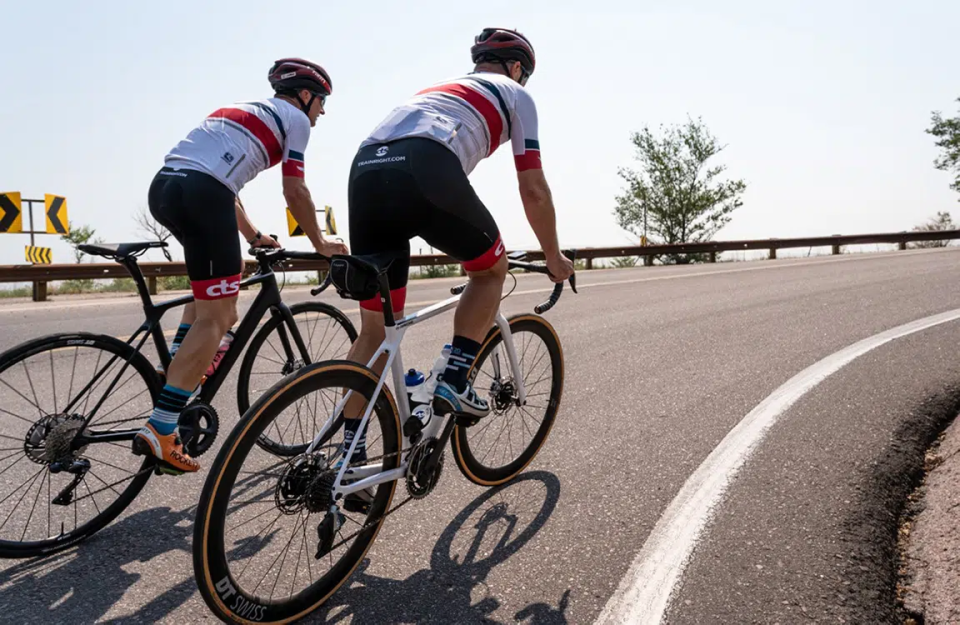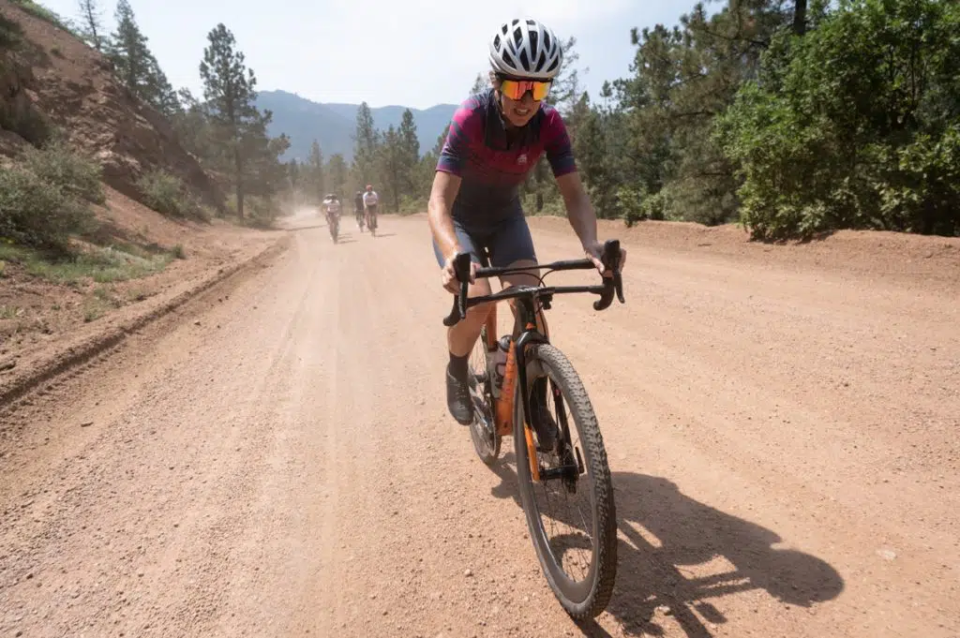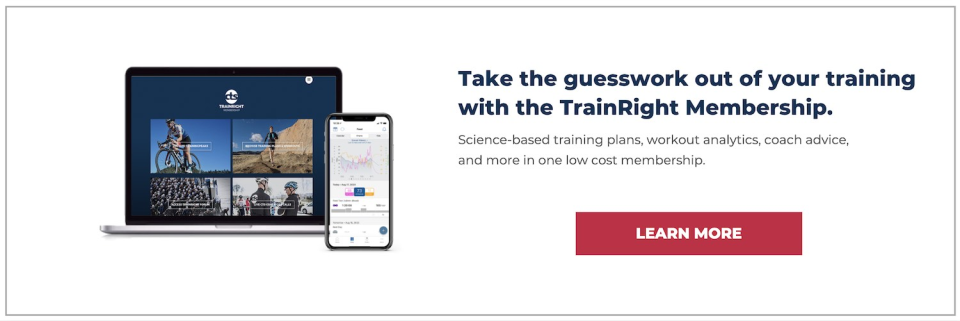Seated and Standing Climbing Mechanics to Ride Uphill Faster
A cyclist’s speed going uphill is the product of power, weight, and technique. The first two get the lion’s share of the attention, but the last one can make a huge difference in how comfortable, confident, and economical you are on climbs

Improving your body position for seated climbing and standing climbing on the bike gives you the opportunity to maintain momentum instead of losing it, use your body weight more effectively, spread the work of climbing across more muscles to improve fatigue resistance, reduce back pain, and prevent numbness in your hands.
There are two basic body positions on the bike for climbing: seated and standing. Most people will spend more time climbing in the saddle, interspersed with shorter periods pedaling out of the saddle. Coaches Adam Pulford and Renee Eastman discussed how to decide when to sit or stand in this Trainright Podcast.
How you sit on the bike and where you position your body when you’re out of the saddle can be the difference between dragging yourself up the mountain and dancing on the pedals.
Body position for seated climbing
Within seated climbing I think there are two variations for body position that are notable: Front Seated and Rear Seated.
Front Seated Climbing Position
Front Seated is useful for short, steep, punchy hills because it moves your center of gravity forward on the bike and lets you focus on a very forceful downstroke. Think about what you do when you want to forcefully stomp on something on the ground. You lean your upper body forward so you have more weight over your knee when you use your big hip and knee extensor muscles to bring your foot down. This is the same principle, only you’re stomping on the pedal. Bend your arms and bring your chest forward and down toward the stem.

Grasping the brake hoods is the best hand position for Front Seated Climbing. When you move forward on the saddle, having your hands on the tops of the bars can feel cramped, particularly as you try to lower your chest toward the bars. No matter where your hands are, you should not have a death grip on the bars or hoods. You want your hands to anchor your upper body so you can maintain a strong platform so you can direct all the power in your core and hips to the pedals.

Heel Position for Seated Climbing
In both front and rear seated climbing positions you want to drop your heel as your foot moves through the one or two o’clock position of the pedal stroke (as viewed from the right side). This means your heel will nearly level with. the ball of your foot, not necessarily below it. Because moving forward on the saddle reduces effective seat height you should almost feel like you could stomp through the bottom of the pedal stroke. This shortened stroke and your relatively closed hip angle mean you may not be able to use your hip flexors much on the upstroke, but remember to push your foot forward over the top of the pedal stroke.
The Front Seated Position is best for short periods where you need some extra punch or super steep hills on road, gravel, or mountain bike.
Rear Seated Climbing Position
On long and/or moderate climbs your body position on the bike can remain very similar to your flat road cycling position or you can move back in the saddle. Where the Forward Seated position puts the emphasis on a forceful downstroke, moving back in the saddle seems to promote a more balanced pedal stroke that includes kicking your foot forward over the top, engaging the major hip and knee extensors for a powerful downstroke, scraping back through the bottom of the pedal stroke, and using hip flexors to unweight your foot on the upstroke.
The above is a short excerpt from the full CTS TrainRight article, to read the full article, please visit: https://trainright.com/cyclists-seated-and-standing-climbing
FREE 14 DAY MEMBERSHIP TRIAL
Gran Fondo Guide fans, click on the image above and get TrainRight Membership for a 14 day no obligation trial. TrainRight Membership comes with a 30-day money-back guarantee!
About CTS
As it has since 2000, Carmichael Training Systems leads the endurance coaching industry with proven and innovative products, services, and content. And the results speak for themselves; no other coaching company produces more champions, in such a wide variety of sports and age groups, than CTS.
For more information, please visit: https://trainright.com

